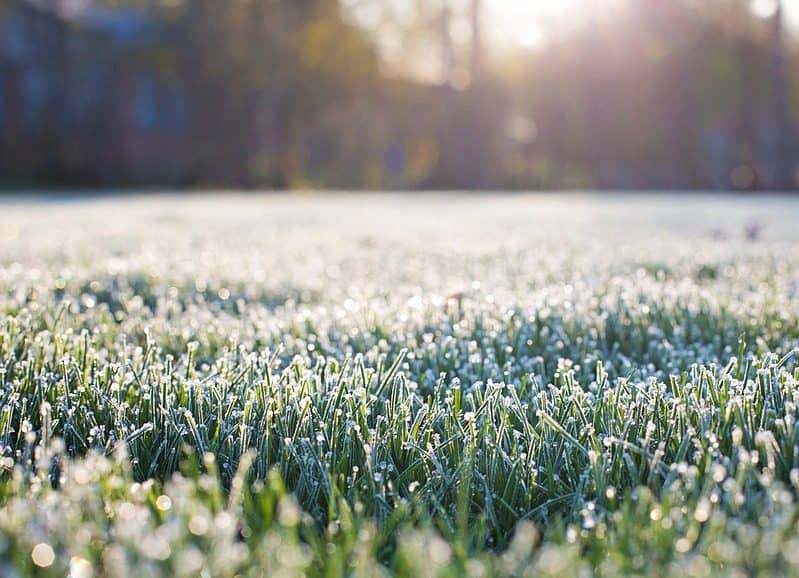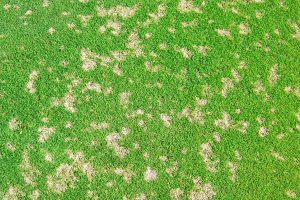
News

Lawn diseases to look out for in winter
May 28, 2021
Climate conditions in some locations can unfortunately provide the ideal breeding ground for particular lawn diseases. Generally, these diseases develop due to excessive shade, compacted soil, poor drainage, and lack of sufficient lawn nutrition. In winter, some of these problems worsened due to shorter daylight hours and fungal disease issues can quickly develop.
Here are some of the common turf diseases that can occur in winter:
Small brown patches with an outer ring? It could be…
Winter fusarium (Microdochium nivale)
Winter Fusarium symptoms most commonly present themselves in the cooler months between May and September in wet conditions. It is primarily a cool season turf variety disease, but it has been seen in warm season varieties as well.
Winter Fusarium appears as orange/brown patches less than 5cm or so in diameter but can continue to enlarge to 20cm if left untreated. Smoke like rings can also occur on the outer edge of the patch with a water-soaked appearance.
Treatment
Remove thatch in spring and use a balanced, high nitrogen fertiliser. Avoid late afternoon/early evening watering. Treat with Mancozeb or Zaleton Fungicide. Commercially available options include Banner Maxx and Vantage Fungicide.

Red threads forming in a patch of your lawn? It could be…
Red Thread (Laetisaria fuciformis)
Red Thread is a fungal disease that often occurs during humid conditions. The first signs of this disease are small yellow/brown patches with small red threads or needles and pink soft mycelium fluff. The disease spreads to form larger areas. Small soaked patches in spring are another symptom. This disease is common in lawns low in nitrogen.
Treatment
Use a nitrogen-based fungicide with a systemic component like Zaleton Fungicide. A commercial option include Velista Fungicide. Then apply a nitrogen-based fertiliser.

Dollar sized spots on the lawn? Straw spots on the leaf blades? It could be…
Dollar Spot (Sclerotinia homeocarpa)
Dollar Spot is a very common fungal disease and, in some areas, can develop at any time during the year. As its name suggests, the appearance of this disease is usually identifiable as dollar sized spots of discoloured grass appearing within your lawn. Up close, the discoloured leaves will have straw coloured lesions with red/brown edges to them. If left to spread the spots will get larger and form bigger patches of affected grass.
Another identifying feature of Dollar Spot is the web like fine threads that form through the leaves of your lawn on colder mornings.
Treatment
Remove the thatch layer in spring and use a high nitrogen fertiliser. Avoid evening watering. Treat with Mancozeb or Zaleton Fungicide. A commercially available fungicide for treatment is Bumper 625 EC Fungicide or Banner Maxx.

Fungicide Treatments
Domestically Available Fungicides
These are both available from most garden centres or your local Bunnings Store.
Mancozeb – Mancozeb is a trusted protectant fungicide that controls a wide range of diseases like powdery mildew, dollar spot and rust. For best results, a complete spray of the entire lawn is recommended.
Zaleton Dual Action Systemic Fungicide – Zaleton contains Tebuconazole which works systemically from within the plant to control disease and Trifloxystrobin which helps prevent fungal infection.
How to avoid fungal diseases in your lawn
Aeration
Loosening of the soil to remove compaction and improve drainage. Aeration will improve your lawns ability to absorb water, nutrient and oxygen which will help your lawn stay healthier.
Fertilising
Overapplying fertiliser or underapplying to nutrient deficient soils can promote some fungal diseases. Check with your local Lawn Solutions Australia turf supplier for the specific requirements for your turf variety. Make sure that you stick to a fertilising program that provides your grass with the nutrient it needs in regular intervals throughout the year.
Remove thatch
Over time your lawn can develop a thick layer of thatch, dead organic matter, excessive roots, and stems within the profile of your grass. Dethatching prevents waterlog in your roots and allows proper drainage; this will help to prevent the risk of fungal issues.
Irrigation and Shade Management
Avoid over-watering, particularly in shaded areas. Shade prevents the quick evaporation of dew or surface water and continued dampness will encourage fungal disease. When watering, do so early in the morning not at night, to allow the area to dry during the day. Water deeply, but less frequently, to encourage stronger roots and to allow the water to absorb properly.
Heavy dew and prolonged periods of dampness are common in winter, so it is important to increase sunlight access where possible to help the dew evaporate throughout the day. Aeration and improved drainage will also help with these conditions.